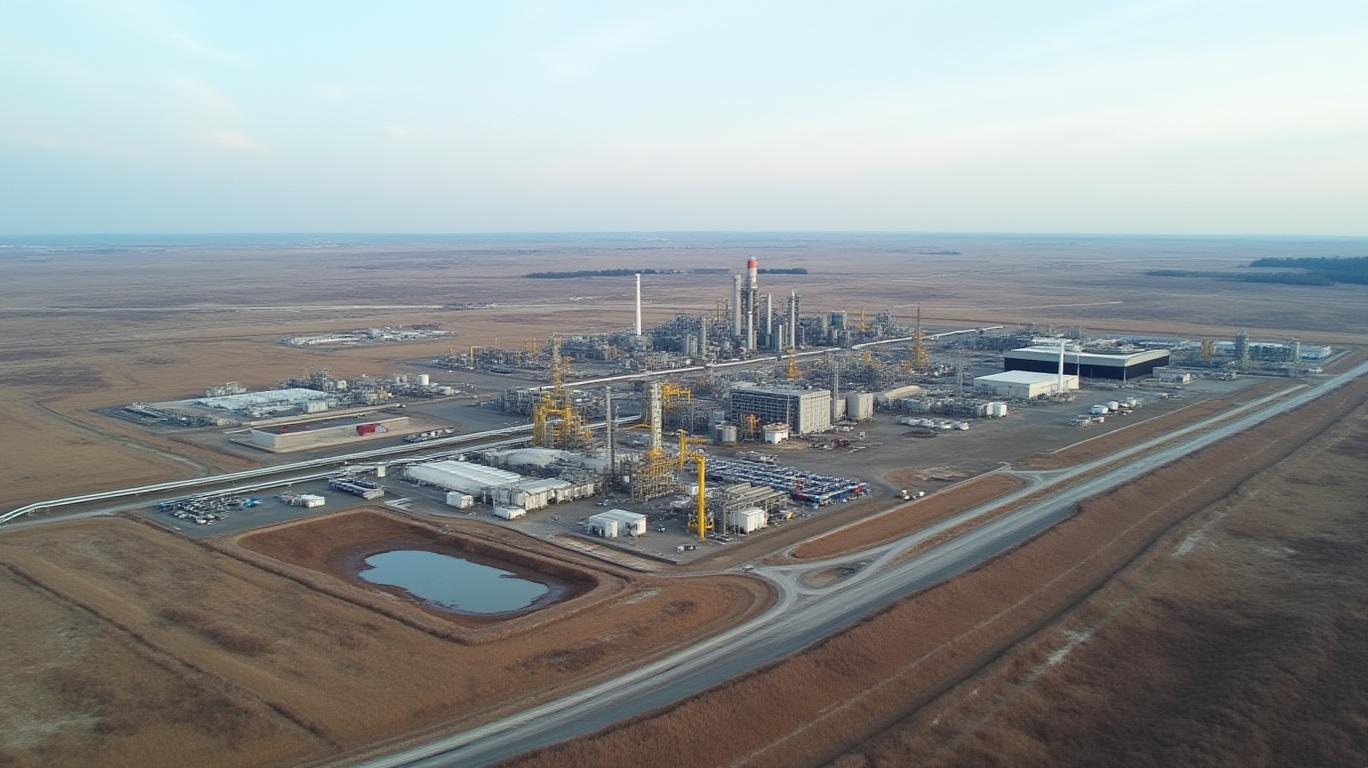Suncor's Resilient Refining Engine Drives Q1 Profit Beat Amid Margin Headwinds
In an energy sector grappling with fluctuating crude prices and refining margin pressures,
has emerged as a standout performer. The Canadian integrated oil giant reported a robust Q1 2025 profit, driven by record production and operational excellence in its refining segment, even as crack spreads softened. This resilience underscores Suncor’s strategic advantages in a challenging market, but also highlights vulnerabilities tied to commodity prices and currency fluctuations.The Refining Edge: Efficiency Overcomes Margin Headwinds
Suncor’s refining segment delivered a masterclass in operational leverage, despite facing a 4% year-over-year decline in Adjusted Funds from Operations (AFFO) to C$3.045 billion. The refining throughput hit a record 483,000 barrels per day (bpd), a 6% increase over Q1 2024, with refinery utilization soaring to 104%—far exceeding the U.S. average of 90% and Canadian averages. This outperformance was amplified by Suncor’s integrated business model, which pairs its refineries with low-cost crude feedstocks from oil sands and upstream operations.

The company’s 5-2-2-1 index crack spread—a structural advantage in diesel-heavy refining—provided a margin uplift of approximately 50% compared to the standard 3-2-1 crack spread. Over the past five years, this advantage has contributed an estimated C$9.5 billion to margins, a critical buffer against softer crack spreads in Q1. Analysts at Wolfe Research noted that Suncor’s refineries are uniquely positioned to capitalize on North American crude differentials, a theme likely to persist as demand for diesel remains strong in global markets.
Upstream Momentum Fuels the Bottom Line
While refining margins softened, Suncor’s upstream division delivered record production of 853,200 bpd, supported by strong performance at its oil sands projects. The Firebag and Fort Hills operations achieved record outputs, bolstering the company’s bitumen production guidance of 880,000–920,000 bpd for 2025. This upstream strength, combined with refining efficiencies, allowed Suncor to maintain a free funds flow of C$1.9 billion, enabling C$1.5 billion in shareholder returns through buybacks and dividends.
The dividend payout ratio of 45.5% remains conservative, leaving room for growth even in a low-oil-price environment. Management emphasized that every $1 increase in WTI crude prices boosts AFFO by roughly C$200 million—a critical lever as the company assumes a WTI price of $75/bbl for its 2025 guidance.
Analysts Weigh In: A “Moderate Buy” with Upside Potential
Suncor’s operational resilience has drawn cautious optimism from analysts, with a consensus “Moderate Buy” rating. Wolfe Research stands out with a C$71 price target, citing Suncor’s ability to generate free cash flow even in periods of margin compression. The firm’s valuation hinges on the belief that Suncor’s integrated model and refining expertise will outperform peers in volatile markets.
However, risks remain. A weaker Canadian dollar—a key factor in Suncor’s USD-denominated crude exports—could erode margins, while prolonged declines in oil prices below $70/bbl could strain the company’s financial flexibility. Suncor’s C$6.1–6.3 billion 2025 capital budget, focused on sustaining assets rather than growth, reflects this caution.
Conclusion: A Balanced Play in an Uncertain Energy Landscape
Suncor’s Q1 results paint a picture of a company that has mastered the art of operational optimization. Its record refinery utilization, integrated asset strategy, and disciplined financial management position it as a durable player in an energy sector increasingly bifurcated between low-cost producers and those struggling with inefficiencies.
The data speaks clearly: Suncor’s refining margins have delivered a five-year C$9.5 billion uplift through structural advantages, while its upstream operations provide a hedge against refining volatility. With a free funds flow of C$1.9 billion and a dividend payout ratio under 50%, the company retains flexibility to navigate commodity cycles.
Yet investors must weigh these strengths against external risks. A sustained drop in WTI below $70/bbl or a sharp CAD depreciation could test Suncor’s margins. Still, the company’s track record of outperforming industry utilization metrics and its shareholder-friendly policies suggest it is well-equipped to weather near-term headwinds.
For investors seeking exposure to a resilient integrated energy operator with a proven refining edge, Suncor remains a compelling, if nuanced, choice—one that balances near-term profitability with long-term structural advantages in North America’s energy landscape.

Comments
No comments yet